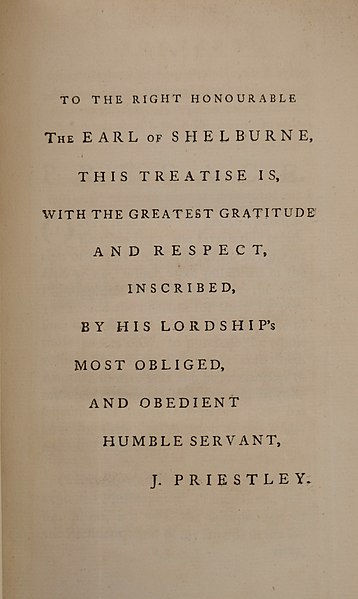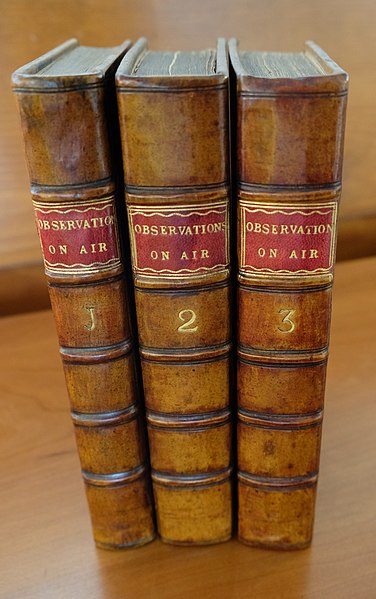Experiments and Observations on Different Kinds of Air
Experiments and Observations on Different Kinds of Air (1774–86) is a six-volume work published by 18th-century British polymath Joseph Priestley which reports a series of his experiments on "airs" or gases, most notably his discovery of the oxygen gas.
Volume I of Experiments and Observations on Different Kinds of Air
Pneumatic trough, glass collecting cylinders and other equipment used by Priestley in his experiments on gases. The right-hand cylinder exhibits a sprig of mint which showed that plants generated oxygen from carbon dioxide
Dedication to Lord Shelburne in volume I of Experiments and Observations on Different Kinds of Air (1774)
Volumes I-III of Experiments and Observations on Different Kinds of Air (1774, 1775, 1779)
Joseph Priestley was an English chemist, natural philosopher, separatist theologian, grammarian, multi-subject educator, and liberal political theorist. He published over 150 works, and conducted experiments in several areas of science.
Portrait of Priestley, 1801
Priestley's birthplace (since demolished) in Fieldhead, Birstall, West Yorkshire – about six miles (10 km) southwest of Leeds
Mary Priestley, by Carl F. von Breda (1793); daughter of ironmaster Isaac Wilkinson, sister of industrialist John Wilkinson
A redacted version of A New Chart of History (1765); Priestley believed this chart would "impress" upon students "a just image of the rise, progress, extent, duration, and contemporary state of all the considerable empires that have ever existed in the world"








